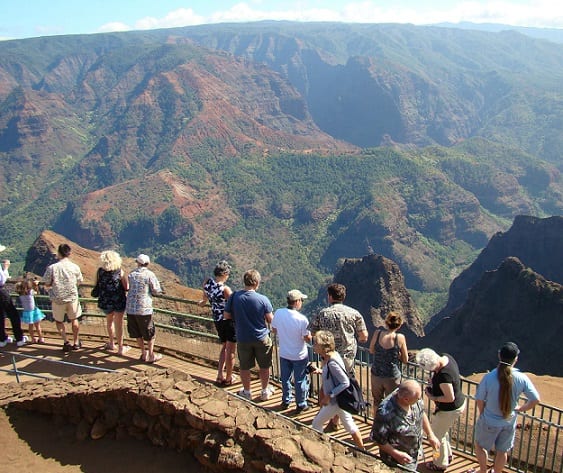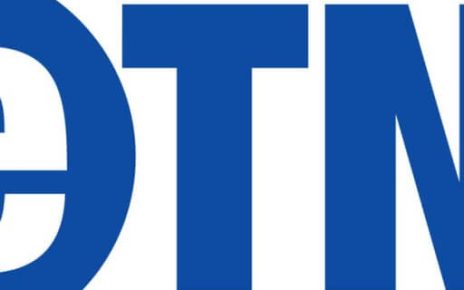Nature, culture, community, and marketing are all part of Kauai island’s Destination Management Action Plan developed by islanders themselves along with the Visitors Bureau and published by the Hawaii Tourism Authority.
- What are the plans for Kauai’s tourism marketing over the next 3 years?
- How resources and culture can enhance both visitor experiences and island residents.
- Why “Shop Local” satisfies the tourists as well as the island’s economy.
Part of the Hawaii Tourism Authority’s (HTA’s) strategic vision and continuing efforts to manage tourism in a responsible and regenerative manner includes Destination Management Action Plans (DMAPs). For the island of Kauai, this plan was developed by the residents of the island, and in partnership with the County of Kauai and Kauai Visitors Bureau. It serves as a guide to rebuild, redefine and reset the direction of tourism on the Garden Island and identifies areas of need as well as solutions for enhancing the residents’ quality of life and improving the visitor experience.
HTA has announced the publication of the 2021-2023 Kauai Destination Management Action Plan (DMAP). This plan focuses on key actions that the community, visitor industry and other sectors deem necessary over a three-year period. The actions are organized by the four interacting pillars of HTA’s Strategic Plan – Natural Resources, Hawaiian Culture, Community and Brand Marketing:
Respect for Natural and Cultural Resources
• Focus policy efforts on appropriate behavior that will instill value in both visitors and residents for natural and cultural resources (malama aina).
• Collaborate with the State of Hawaii Department of Land and Natural Resources to develop and implement policies to increase monitoring and enforcement efforts.
Hawaiian Culture
• Invest in Hawaiian cultural programs and identify funding sources that enhance the visitor experience and connect both tourism and communities.
• Focus policies that address overtourism by managing people while on Kauai.
• Encourage low-impact green rides to improve the visitor experience, reduce island traffic, increase small business opportunities, and meet climate action goals.
• Increase communication, engagement and outreach efforts with the community, visitor industry, and other sectors.
Brand Marketing
• Develop educational materials for visitors and new residents to have respect for local cultural values.
• Promote “Shop Local” to visitors and residents.
• Support diversification of other sectors.
These actions were developed by the Kauai steering committee, comprised of Kauai residents representing the communities they live in, as well as the visitor industry, different business sectors, and nonprofit organizations. Representatives from the County of Kauai, HTA, and the Kauai Visitors Bureau also provided input throughout the process.
“I wish to thank the many community members and organizations that have provided input on the revival of our visitor industry and continued forward progress. I applaud the collaborative effort and dedication to create a visitor industry that cares for and supports our island home, our residents and our visitors,” said Kauai County Mayor Derek Kawakami.
“This DMAP is a reflection of the love and concerns that Kauai’s people have for their home and island. As such, every idea and actionable item is intended to malama Kauai – meaning to care for, to protect and to nurture. As a Hawaiian cultural value, ‘malama’ is a verb and it requires all of us to be mindful in taking responsible action to ensure that the future of Kauai is sustainable, as we collectively seek to envision and design a new model of tourism,” said John De Fries, HTA’s president and CEO.
The Kauai DMAP process started in July 2020 and continued with a series of virtual steering committee meetings, as well as two virtual community meetings in October. The foundation of the Kauai DMAP is based on HTA’s 2020-2025 Strategic Plan and the 2018-2021 Kauai Tourism Strategic Plan.
“I’m proud of Kauai County’s residents. They have worked hard through the DMAP and other plans to evaluate the frustrations voiced by our community, and amidst many differences, they keep coming back to the table to try to make things better for all involved. Mahalo to the Hawaii Tourism Authority for allowing our community to provide feedback and recommendations from the front line,” said Nalani Brun, director of Kauai County’s Office of Economic Development.
The members of the Kauai steering committee are:
• Fred Atkins (HTA Board Member – Kauai Kilohana Partners)
• Jim Braman (General Manager – The Cliffs at Princeville)
• Stacie Chiba-Miguel (Senior Property Manager – Alexander and Baldwin)
• Warren Doi (Business Innovation Coordinator – North Shore community member)
• Chris Gampon (General Manager – Outrigger Kiahuna Plantation Resort & South Kauai community member)
• Joel Guy (Executive Director – The Hanalei Initiative/North Shore Shuttle)
• Rick Haviland (Owner – Outfitters Kauai)
• Kirsten Hermstad (Executive Director – Hui Makaainana o Makana)
• Maka Herrod (Executive Director – Malie Foundation)
• Francyne “Frannie” Johnson (East Kauai community member)
• Leanora Kaiaokamalie (Long Range Planner – County of Kauai Planning Department)
• Sue Kanoho (Executive Director – Kauai Visitors Bureau)
• John Kaohelaulii (President – Kauai Native Hawaiian Chamber of Commerce)
• Sabra Kauka (Kumu)
• Will Lydgate (Owner – Lydgate Farms)
• Thomas Nizo (Festival Director – Historic Waimea Theater and Cultural Arts Center)
• Mark Perriello (President and CEO – Kauai Chamber of Commerce)
• Ben Sullivan (Sustainability Manager – County of Kauai Office of Economic Development)
• Candace Tabuchi (Assistant Professor – Kauai Community College, Hospitality and Tourism)
• Buffy Trujillo (Regional Director – Kamehameha Schools)
• Denise Wardlow (General Manager – Westin Princeville Ocean Resort Villas)
• Marie Williams (Long Range Planner – County of Kauai Planning Department)
“Special thanks to HTA for this effort and their commitment to moving the needle on some of our key issues. It takes all of us coming to the table – the state, county and the private sector to make a difference for our island. Mahalo to all those who gave their time and input to this important plan,” said Sue Kanoho, executive director of the Kauai Visitors Bureau and steering committee member.
Kauai’s DMAP is available on HTA’s website: www.hawaiitourismauthority.org/media/6449/hta_kauai_dmap_final.pdf
HTA is also working to finalize the Maui Nui (Maui, Molokai and Lanai) DMAP. The Hawaii Island DMAP process is well underway, and Oahu’s DMAP process is expected to begin in March. To learn more about HTA’s Community-Based Tourism program and to follow the progress of the DMAPs visit: www.hawaiitourismauthority.org/what-we-do/hta-programs/community-based-tourism/



